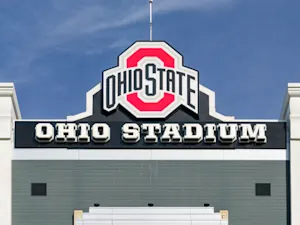
7 Dangerous Things Once Considered Completely Safe
It's a tale as old as time in our culture... something once considered innocuous is eventually revealed to pose hidden safety risks. Before the Occupational Safety and Health Administration (OSHA) arrived on the scene with widespread regulations, many things were left completely unregulated and continually marketed to the public. Here are six seemingly harmless things that were once commonplace but, upon closer examination, were later flagged as posing significant risk to public health and safety. Number one is sure to be the most shocking!
7. Seatbelts and Car Seats
Did you know seatbelts were not made mandatory in cars until 1966 in the United States, and it took until 1975 for the rest of the world to catch up? Kids sitting unrestrained in the front seat was common, and babies were held by someone who wasn't driving.

6. Mercury in Medicine
In the 19th century, mercury was commonly used in medicinal practices due to its perceived therapeutic properties. However, research studies later revealed that prolonged mercury exposure posed serious human health risks. As the medical community became increasingly aware of its harmful effects, mercury was gradually phased out of medicinal use.

5. Asbestos in Household Appliances
During the 20th century, asbestos was a popular choice for household appliances like stoves, toasters, slow cookers, and bottle warmers due to its fire-resistant properties. However, it was later discovered that asbestos fibers could cause serious health issues, including lung cancer. With this new information in hand, many countries banned its use in household and industrial settings to protect the health and safety of the public.

4. Lead Paint
Lead-based paint was widely used in homes built before 1978 throughout the United States. The Environmental Protection Agency (EPA) reports that 87% of homes constructed before 1940 contain lead-based paint. While this paint was once common, we now have scientific evidence that exposure to lead can cause developmental issues, particularly in children.

3. Arsenic-Derived Pigments
During the 19th and early 20th centuries, chemically made colors became popular in fashion and design, including those made from arsenic. Despite their known toxicity, these vibrant colors continued to be used in making textiles because of their profitability as customers continued to buy, regardless of the risk. However, as awareness of the pigment's harmful effects grew in the latter half of the 20th and 21st centuries, a concerted effort was made to mitigate arsenic exposure in consumer products through industry standards to protect public health.

2. Radium-Infused Makeup
During the early 1900s, it was all the rage to use cosmetic products containing radium due to its alleged ability to revitalize the skin. Cosmetic companies latched on to this new form of energy and marketed the proposed benefits to the public, specifically women. As we now know, radium is a radioactive element that can have severe health implications. The gruesome outcomes of radium exposure led to the demise of radium-infused cosmetics.

1. Heroin
Sliding into the number one spot, heroin was commonly used as a medication, not just as a recreational drug. It was so popular that Bayer Laboratories developed a cough syrup containing heroin in 1898. However, by 1910, Bayer discontinued the production of heroin due to the alarming realization that it had extremely addictive properties. Later, the United States followed suit, banning heroin production in 1924.

References: The General History of Car Seats| Child Passenger Safety Laws in the United States, 1978–2010: Policy Diffusion in the Absence of Strong Federal Intervention | Mercury and Health | Environmental Protection Agency (EPA) - Asbestos| Centers for Disease Control and Prevention (CDC) - Lead Poisoning | World Health Organization (WHO) - Arsenic) | [CNN Style - When beauty products were radioactive] | A History of Americas Most Popular Drugs
























